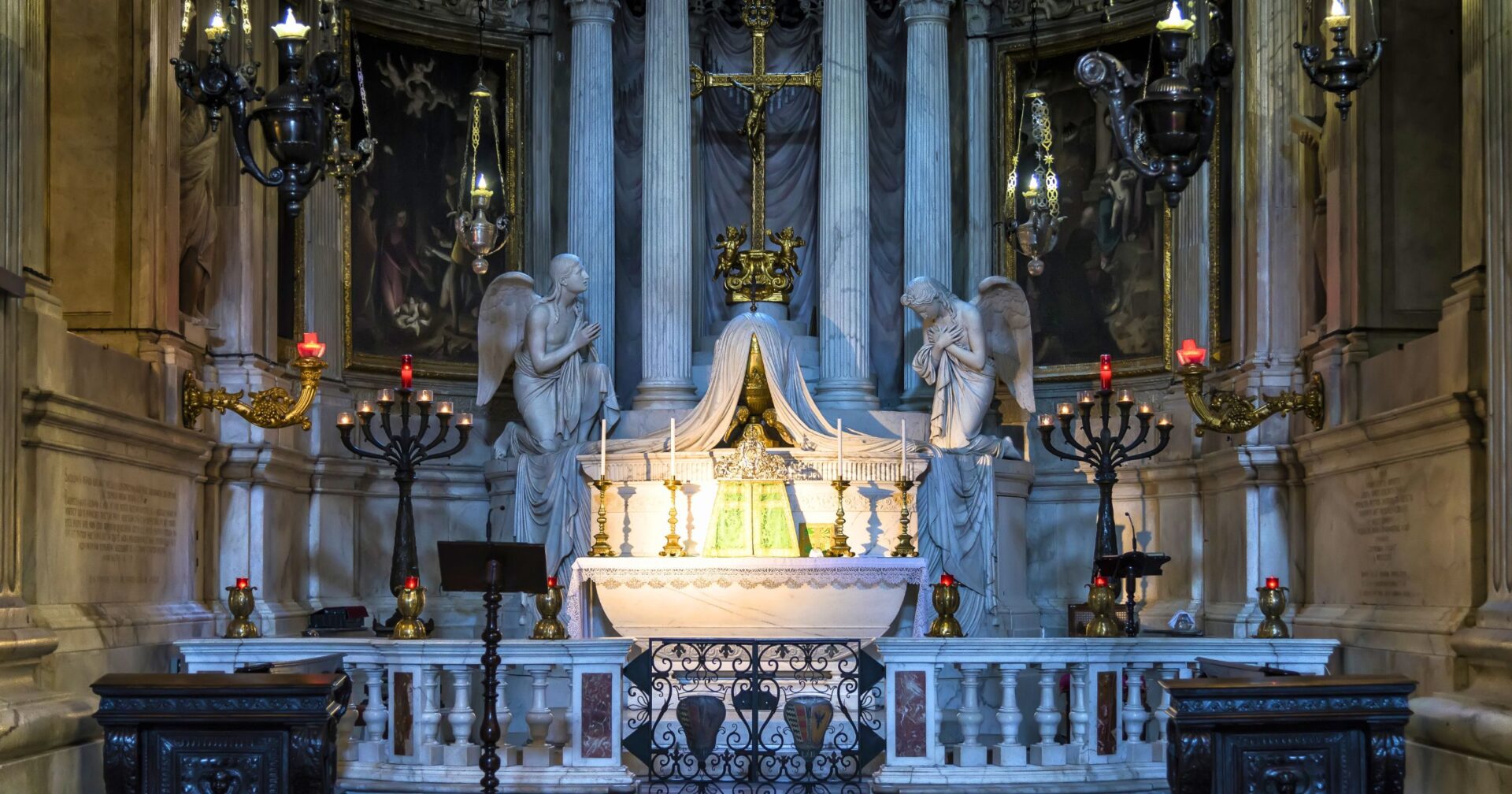Contained within every consecrated Catholic altar are relics of saints, an ancient tradition that finds its roots in the very earliest days of the Church.
When Catholicism was still illegal under the Roman Empire, early members of the Faithful would meet in underground catacombs to escape harsh persecution. They would celebrate Mass on the stone slabs covering the tombs of martyrs in order to show proper reverence for the ultimate sacrifice they made for Christ.
When Emperor Constantine legalized Christianity, Mass no longer needed to be held underground out of necessity. Moving above ground, they didn’t leave behind the tradition of venerating the relics of saints. Churches were generally built over the remains of martyrs, but when not possible a first-class relic was placed within the altar and covered by a stone slab.
The Second Council of Nicaea would later decree that all churches were to have altars containing relics of saints. Eventually, the practice became ecclesiastical law, with early editions of the Roman Pontifical mandating altars to contain first-class relics from two separate saints, one of which a martyr.
The Second Vatican Council affirmed and simplified the ancient practice:
“The practice of placing relics of Saints, even those not Martyrs, under the altar to be dedicated is fittingly retained. Care should be taken, however, to ensure the authenticity of such relics.” – Roman Missal (302)
When the priest kisses the altar while celebrating Mass, he shows reverence not only for Jesus Christ as the literal cornerstone of the Church the altar represents, but also continues the ancient tradition of showing reverence for the sacrifice of martyrs. It serves as a continual reminder that when in celebrating Mass, we celebrate with all the saints and angels in Heaven.
“When he broke open the fifth seal, I saw underneath the altar the souls of those who had been slaughtered because of the witness they bore to the word of God.” – Revelation 6:9
Photo credit: Checco2 / Shutterstock.com


















Billy Ryan, that picture behind your headline for your article regarding why every Catholic altar contains relics (Nov. 27, 2018), it must be the altar in SS. Trinità dei Peligrini, right? I’ll never forget that altar at the FSSP church in Rome!
In my opinion of why Catholic had a lot of consecrated Saints relics on the altar; just because they offered their life for the Holy God which is also in the altar; which is the the most Holy of all Holy’s and so there for they are following the life of our most high God JESUS CHRIST. So that when are worshipping our living God that we can remember and also imitate the lives of every one when once we remember their life when they are on this earth. That means they belong to a group of Catholic Christians one and univesal.
What Is the relic at Saint John’s Church in Worcester, MA.
Expertise: Our team brings decades of combined experience in the concrete industry.
Innovation: We employ the latest technologies and techniques to ensure durable and aesthetically pleasing results. https://www.concretenhma.com
Expertise: Our team brings decades of combined experience in the concrete industry.
Innovation: We employ the latest technologies and techniques to ensure durable and aesthetically
pleasing results. https://www.concretenhma.com